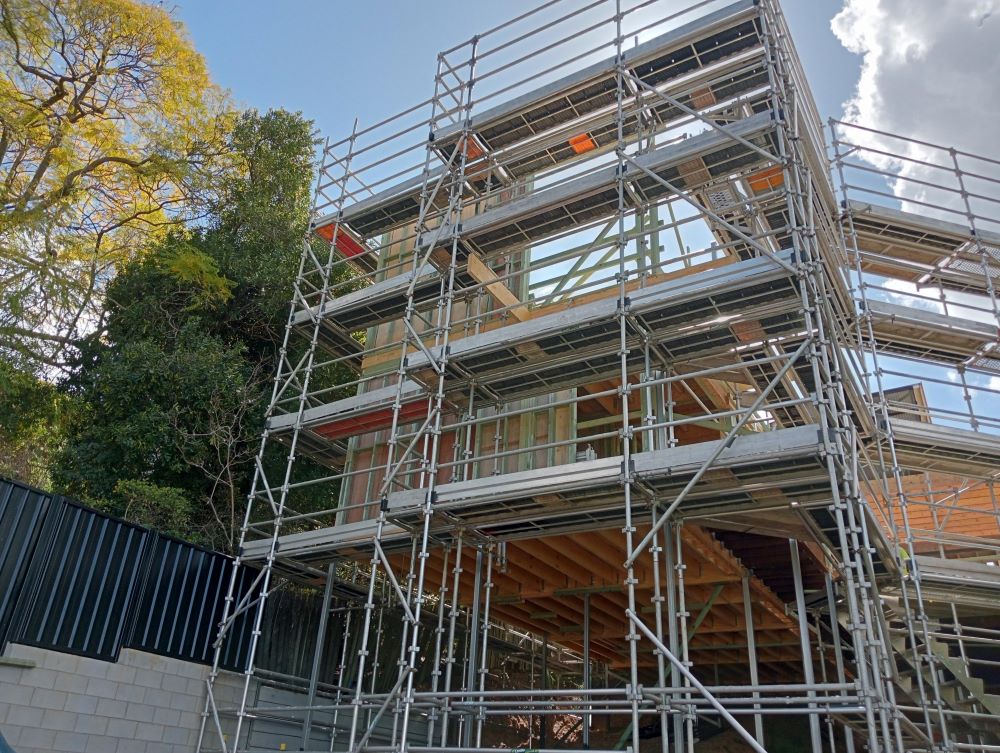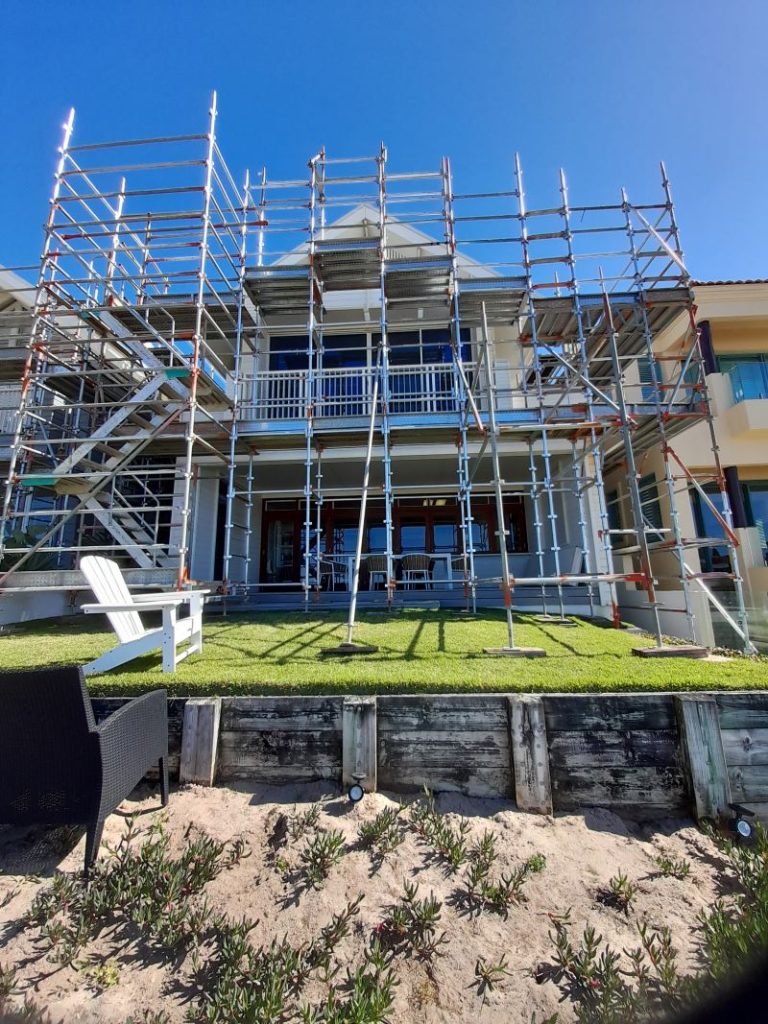Comprehensive Guide to Choosing Between Aluminium and Steel Scaffolding for Optimal Construction Performance
Choosing the right scaffolding for your construction or renovation project is critical to ensure both safety and operational efficiency. Two of the most commonly used materials in this field are aluminium scaffolding and steel scaffolding. Each type of scaffolding has its own unique characteristics, advantages, and applications suited for various project requirements. This detailed comparison will highlight the features, benefits, and ideal scenarios for each material, empowering you to make an informed choice that aligns with your specific construction needs.
When evaluating scaffolding options, it is vital to understand the distinct advantages that aluminium and steel scaffolding offer. This guide will delve deeply into these attributes, equipping you with the essential knowledge needed to select the scaffold that best meets the specific demands of your construction project.

Maximize Efficiency with the Benefits of Aluminium Scaffolding in Construction Projects
Aluminium scaffolding is widely appreciated for its lightweight nature and exceptional ease of handling, making it a top choice for projects that require frequent relocation and rapid assembly. The components of aluminium scaffolding weigh significantly less than those made from steel, enhancing both transportation and manoeuvrability at the construction site. This characteristic is particularly advantageous for contractors working in tight spaces or situations that demand frequent repositioning of scaffolding, resulting in a smoother workflow and increased overall efficiency on site.
Moreover, aluminium scaffolding boasts impressive corrosion resistance, which makes it an ideal material for outdoor projects or environments that experience high humidity levels. This inherent property ensures that the scaffold retains its structural integrity and visual appeal over time. The corrosion-resistant capabilities of aluminium scaffolding contribute to its long-term durability and dependability, particularly crucial for projects that are exposed to harsh weather conditions or moisture, thereby safeguarding your investment.
Additionally, the setup and dismantling processes for aluminium scaffolds are generally quick and straightforward, as the components are designed for user-friendly assembly. This efficiency can lead to significant time savings on site, especially for projects operating under tight deadlines. By minimizing the time spent on scaffold setup, construction teams can concentrate on completing their tasks efficiently and safely, ultimately enhancing overall productivity and project outcomes.
Discover the Exceptional Strength and Stability of Steel Scaffolding for Construction Applications
Steel scaffolding is renowned for its superior strength and impressive load-bearing capacity, making it an exceptionally durable option for construction endeavors that require robust support structures. This material is meticulously engineered to withstand considerable weight and to perform reliably under challenging conditions, providing a stable and secure platform for workers, even in demanding environments. Its rigidity and overall strength make steel scaffolding the preferred choice for projects involving heavy machinery or substantial materials, ensuring safety and dependability at elevated heights.
The durability of steel scaffolding presents a significant advantage, especially in extreme weather conditions or high-traffic areas where the scaffold may encounter heavy usage. Unlike lighter materials, steel scaffolding is designed to resist bending or deformation, guaranteeing a secure working environment for personnel. This reliability fosters confidence and a sense of safety among construction teams, allowing them to work more effectively and without concern.
Furthermore, steel scaffolding is recognized for its cost-effective longevity. While the initial investment may be higher compared to aluminium, the durability and long lifespan of steel scaffolding make it a financially sound option over time. This material can withstand repeated use, resulting in fewer replacements or maintenance needs, thus offering substantial savings in the long run, making it a wise investment for any construction project.
When determining the best choice between aluminium and steel scaffolding, it is crucial to evaluate the specific needs of your project. Factors such as the weight of materials, the required scaffold height and size, as well as the environmental conditions at the job site will heavily influence your ultimate decision-making process.
Engaging in discussions with your scaffold hire company can provide invaluable insights, assisting you in selecting the most suitable option tailored to your project’s specific demands. For additional information on the necessity of scaffolding and which types of projects may require it, be sure to check out our article on the importance of hiring scaffolding.
Essential Factors to Evaluate When Choosing the Right Scaffold Material
When weighing the decision between aluminium and steel scaffolding, several crucial factors must be taken into account. A thorough understanding of each scaffold material’s strength and durability, weight and portability, and cost and affordability will empower you to make a decision that aligns perfectly with your project’s specific needs and constraints.
Evaluating the Strength and Durability of Various Scaffold Materials
Both aluminium and steel scaffolding are recognized for their strength and durability; however, they exhibit distinct characteristics that may influence your choice. Steel scaffolding is generally regarded as having superior strength and load-bearing capacity compared to aluminium. Its robust composition allows steel to withstand heavy loads and maintain stability in challenging construction scenarios, ensuring safety for all involved.
On the other hand, aluminium scaffolds are strong and durable, although they may not support exceptionally heavy loads quite as efficiently as steel. Therefore, it is of utmost importance to carefully assess your project’s weight requirements to determine which type of scaffold material best aligns with your operational needs and safety standards, ensuring a secure working environment.
Understanding the Weight and Portability Features of Scaffolding Options
Aluminium scaffolds have a notable advantage in terms of weight and portability. Their lightweight design allows for significantly easier handling and transportation compared to their heavier steel counterparts. This feature is particularly beneficial for smaller-scale projects or scenarios where scaffolding requires frequent repositioning, as it minimizes physical strain on workers and enhances overall productivity on the job site.
While steel scaffolds may be heavier, they still provide a certain degree of portability; however, they typically require more effort and manpower for transportation. Understanding the relevant weight and portability factors of your project will help ensure efficient and safe scaffold use throughout your operations, ultimately leading to improved job site dynamics and worker safety.
Uncover the Unique Benefits of Aluminium Scaffolding for Construction Projects
Upon evaluating various scaffold materials, aluminium scaffolding emerges with a variety of unique advantages that make it a preferred choice for numerous construction and renovation projects.
Experience Effortless Handling with the Lightweight Design of Aluminium Scaffolding
A key advantage of aluminium scaffolding lies in its lightweight design. In comparison to steel scaffolding, aluminium is substantially lighter, which enhances its manageability and transportability. This characteristic not only accelerates the assembly and disassembly processes but also contributes to a more efficient workflow, ultimately shortening the overall project timeline. Furthermore, the ease of handling significantly boosts worker productivity, reducing the risk of fatigue-related accidents and fostering a safer working environment on site.
Benefit from Exceptional Corrosion Resistance for Long-lasting Performance
Aluminium scaffolding is highly regarded for its exceptional corrosion resistance, making it a suitable choice for a wide range of environmental conditions. Unlike steel, which is prone to rust and deterioration, aluminium’s natural resistance to corrosion ensures that it maintains its structural integrity even when exposed to moisture or harsh outdoor elements. This feature is particularly beneficial for projects conducted in damp or humid conditions, ensuring that the scaffold remains safe and effective throughout its entire use.
Enhance Efficiency with Streamlined Assembly and Disassembly Processes
Another significant advantage of aluminium scaffolding is its quick assembly and disassembly capabilities. The lightweight components, user-friendly connectors, and secure locking mechanisms facilitate the setup process. This efficiency is especially valuable in time-sensitive projects or when scaffolding requires frequent relocation. The rapid assembly and disassembly of aluminium scaffolding save time and help reduce overall labor costs, providing a financial advantage for project managers focused on optimizing their resources effectively.

Recognize the Unparalleled Advantages of Steel Scaffolding in Construction Applications
Steel scaffolding offers numerous benefits that position it as a leading choice among contractors and builders when selecting the most suitable scaffold for their construction projects.
Harness Unrivaled Strength and Load Capacity with Steel Scaffolding
One of the core advantages of steel scaffolding is its unrivaled strength and load capacity. Steel is renowned for its exceptional durability and capability to support substantial loads, making it ideal for projects where scaffolding must bear significant weights. Steel scaffold systems are meticulously designed to provide workers with a stable and secure platform, ensuring their safety while operating at elevated heights and in challenging environments.
Ensure Remarkable Durability in Extreme Environmental Conditions
Steel scaffolding is equipped to withstand a variety of environmental factors, making it suitable for harsh conditions. It can endure adverse weather elements such as high winds, heavy rainfall, and extreme temperature fluctuations. This durability guarantees that the scaffold remains stable and secure, establishing a safe working environment for construction teams. Whether addressing projects like gutter replacements or other tasks that require scaffolding in demanding conditions, steel scaffolding is engineered to withstand the rigors of the job.
Discover the Cost-Effective Longevity of Steel Scaffolding Solutions
Steel scaffolding is widely recognized for its exceptional longevity and overall cost-effectiveness. Its built-in durability ensures that the scaffold can withstand numerous construction projects over extended periods. Unlike other materials, steel scaffolding does not deteriorate quickly, which reduces the need for frequent replacements or repairs.
To determine the most suitable scaffold material for your specific project, it is essential to assess your needs carefully, consult with industry professionals, and consider safety standards along with budgetary constraints.
Step-by-Step Guide to Selecting the Ideal Scaffold for Your Project Needs
Choosing the right scaffold for your project involves meticulously evaluating your unique requirements. By thoroughly assessing your project specifications, consulting with professionals, and considering safety along with budget limitations, you can make a well-informed decision that aligns with your operational goals and significantly enhances project efficiency.
Conduct a Comprehensive Assessment of Your Project Requirements for Scaffold Selection
Begin by evaluating the specific details of your project and the tasks that necessitate scaffold support. Key factors to consider include the height and configuration of the structure, the expected duration of the project, and any specialized requirements that may arise.
For instance, scaffolding for a residential apartment complex may have distinct specifications compared to scaffolding or guard rails required for gutter replacement. By thoroughly understanding your project needs, you can identify the appropriate type and configuration of scaffold that will best suit your operational objectives, ensuring enhanced safety and efficiency on site.
Understanding the Importance of Professional Consultation for Effective Scaffold Selection
Engaging with industry experts, such as Cando Scaffolding, is highly recommended when navigating the complexities of scaffold selection. Our extensive experience in the field ensures that you receive invaluable guidance, helping you meet safety standards and regulatory requirements throughout your project.
Contact us today or request a quote to initiate the process of selecting the ideal scaffold that meets your project’s specific needs and requirements.
The post-Scaffold Choices: Aluminium vs Steel for Your Project appeared first on https://writebuff.com/.
The Article Aluminium vs. Steel: Choosing the Best Scaffold for Your Project Was Found On https://limitsofstrategy.com

